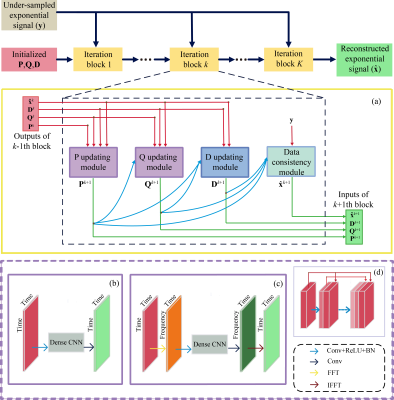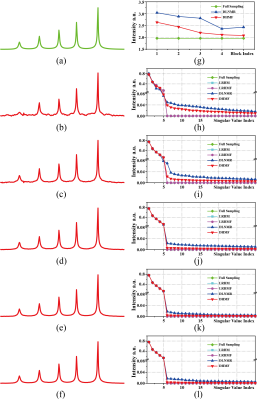Yihui Huang1, Jinkui Zhao1, Zi Wang1, Di Guo2, and Xiaobo Qu1
1Department of Electronic Science, National Institute for Data Science in Health and Medicine, Xiamen University, Xiamen, China, 2School of Computer and Information Engineering, Xiamen University of Technology, Xiamen, China
1Department of Electronic Science, National Institute for Data Science in Health and Medicine, Xiamen University, Xiamen, China, 2School of Computer and Information Engineering, Xiamen University of Technology, Xiamen, China
we proposed a deep learning
reconstruction method based on unrolling the iterative process of a
state-of-the-art model-based low rank Hankel matrix method, which provides
a better approximation of low rank and
preserves the low-intensity signals much better.

Figure 1. The
architecture of DHMF. (a) the general process of the k-th block, (b) P
and Q modules with time domain convolution in the basic DHMF, (c) P and Q
modules with frequency domain convolution in the enhanced DHMF, (d) dense
convolutional neural network.

Figure 2. The reconstructed
spectra and singular values at each block. (a) fully sampled spectrum, (b-f)
the reconstructed spectrum by the 1st to 5th blocks, (g) the nuclear norm of
Hankel matrix of time-domain signal, and (h-l) denote corresponding singular
values of the output of each block. Note: To show small singular value clearly,
there exists a break from 0.084 to 0.085 in Y axis of (h-l).